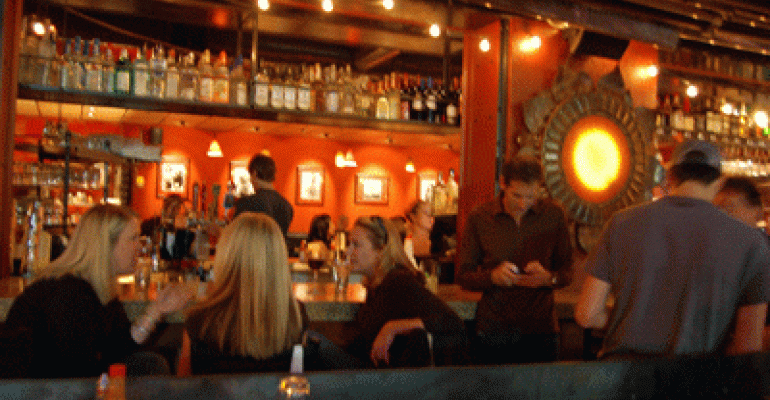Stretching a time-honored promotional gambit to new limits, some operators are getting creative with happy hour. They’re switching up the times when they offer special deals, focusing on products they’re proud of, and otherwise reinventing this longstanding tradition. The reward is an influx of new, good customers and higher sales at formerly slow times.
At 24 Diner in Austin, Texas, happy hour runs from 7 a.m. to 7 p.m. from Monday through Friday, with half-prices on quality well brands and specialty cocktails. The latter, regularly priced at $6 to $12, include libations like Amarillo Lemonade, made with local vodka infused with two kinds of hops, ginger liqueur and fresh-squeezed lemonade. Another signature is the French 24, a riff on the French 75, made with gin, preserved local Meyer lemons and champagne. The kitchen produces a menu of chef-inspired comfort food favorites 24 hours a day, ranging from chicken and waffles to a bacon Gorgonzola burger and a French toast platter.
“We wanted the restaurant to feel comfortable, casual and approachable — the beverage as well as the food,” said sommelier Billy Caruso.
Around 7 a.m., hospital employees from the graveyard shift are usually the first to arrive for happy hour. As the day progresses, young professionals, off-duty restaurant personnel, college students and runners still in their sweat suits are likely to walk in. On game days, Austin’s fervent college football fans stop by for an eye-opener.
“And we honestly see some people drinking really interesting craft beers at 8 a.m.,” said Caruso. “But it’s not an over-the-top party. It’s more people having great conversations about art, music, sports and the world.”
Continued from page 1
Attaching a happy hour discount to high-quality goods can be a wise move, said David Commer, president of Commer Beverage Consulting in Lewisville, Texas.
“It is a really strong strategy for driving people towards your signature items,” Commer said. “I think that is a better approach than just giving away ordinary stuff.”
RELATED: Mimi’s Café focuses on happy hour
Six locations of Kabuki Japanese Restaurant, a 14-unit chain based in Burbank, Calif., have been promoting Reverse Happy Hour for about the past year. The deal offers special pricing on drinks and appetizers from 9 p.m. to close Monday through Thursday, and 8 p.m. to close on Sunday.
The goal is to increase late-night covers in those locations and to promote Japanese beverages, said Young Kim, director of marketing and real estate. It has succeeded on both counts.
“During Reverse Happy Hour, we see a lot more customers coming in later and ordering bottles of sake,” Kim said. “We are getting baby boomers who instead of ordering wine are ordering sake.”
Although the full bar is on offer during Reverse Happy Hour, the focus is on Japanese bottled beers and sakes, as well as cocktails like the Tokyo Mojito ($5.50) and the Ki-Bomb ($3.75). The latter, a 12-ounce mug of Japanese draft beer served with a small hot sake, is a “phenomenal” seller, Kim said.
Continued from page 2
Every Monday is All-Day Happy Hour at Centro Latin Kitchen and Refreshment Palace in Boulder, Colo., part of the eight-unit Big Red F Restaurant Group based there. A special menu of about a dozen beverages and small plates is offered when the doors open at 11:30 a.m. Food service ends at 10 p.m. but the beverage offer runs until midnight.
Centro’s bartenders send out $5 shots of tequila and mezcal, glasses of house wine and Margaritas priced at $4, and cans of a house-label Mexican-style craft lager for $3, to go with executive chef Ian Clark’s Green Chile Hush Puppy and Garlicky Griddled Shrimp Soft Taco.
All-Day Happy Hour has grown “exponentially” in popularity since it debuted three years ago, said operations manager Mike Lawinski. What was formerly the slowest day of the week now surpasses Tuesday in total sales by 30 percent, despite the discount prices.
The patrons include “a ton” of restaurant employees who are off on Monday, working people, students “and the typical lunch customer getting bang for the buck,” Lawinski said.
“It’s very much an event, a party, a place to be seen,” he added. “Three or four other restaurants also have it here now, but our business is growing despite the competition.”




